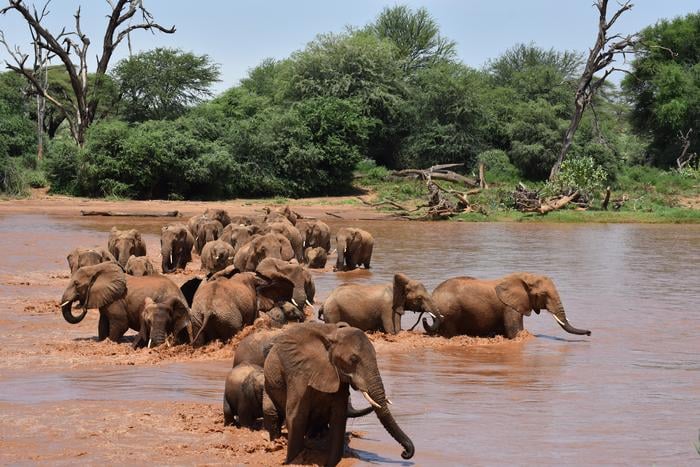Summary: The most comprehensive assessment of African elephants to date reveals severe population declines across the continent. Analysis of more than 1,300 surveys conducted between 1964 and 2016 shows forest elephant populations have dropped by 90% on average, while savanna elephant numbers have fallen by 70%, though some populations are showing signs of recovery.
Journal: Proceedings of the National Academy of Sciences, November 11, 2024, DOI: 10.1073/pnas.2403816121 | Reading time: 4 minutes
A Continental Census Challenge
How do you track elephant populations across a continent more than three times the size of the United States? The task is complex, requiring spotters in planes for savanna elephants and ground teams for forest elephants. Despite these challenges, researchers have compiled and analyzed over five decades of survey data to create the most detailed picture yet of African elephant populations.
The study examined data from 475 sites across 37 countries, revealing that combined elephant populations have declined by an average of 77% since the 1960s.
Not All Populations Face the Same Fate
“The context and the solutions at different sites can be quite different, but there are examples where people are effectively managing and protecting these populations,” notes Professor George Wittemyer of Colorado State University, who helped design the study.
The research reveals stark regional differences. In the war-torn Sahel region of northern Africa, elephant populations have been devastated. Eastern and central Africa have seen significant declines due to ivory poaching and habitat loss. However, some populations in southern Africa, particularly in Botswana, are thriving under protection and sustainable management.
A New Approach to Counting
Traditional elephant counting methods face numerous challenges. Survey areas often change as protected spaces are condensed, and some regions lack regular monitoring. To address these gaps, researchers developed an innovative approach.
“The strength of our approach is that we were able to infer these trends, even in places where the data were extremely poor, in a way that allowed the results from each survey site to be compared,” explains Charles Edwards, a research scientist with CEscape consultancy services. “Understanding how and where trends are different across the range of a species is arguably more important for their conservation than an overall change in abundance.”
Glossary
- Forest elephant: One of two African elephant species, adapted to dense forests
- Savanna elephant: The larger African elephant species, living in open grasslands
- Site-level density: Number of elephants per unit area at a specific location
- Protected spaces: Areas designated for wildlife conservation
Quiz
- What percentage have forest elephant populations declined on average?
Answer: 90% - How many sites were included in the study?
Answer: 475 sites - Over what time period was data collected?
Answer: 1964-2016 - Which region shows the most positive results for elephant conservation?
Answer: Southern Africa, particularly Botswana
Enjoy this story? Get our newsletter! https://scienceblog.substack.com/
If our reporting has informed or inspired you, please consider making a donation. Every contribution, no matter the size, empowers us to continue delivering accurate, engaging, and trustworthy science and medical news. Independent journalism requires time, effort, and resources—your support ensures we can keep uncovering the stories that matter most to you.
Join us in making knowledge accessible and impactful. Thank you for standing with us!

